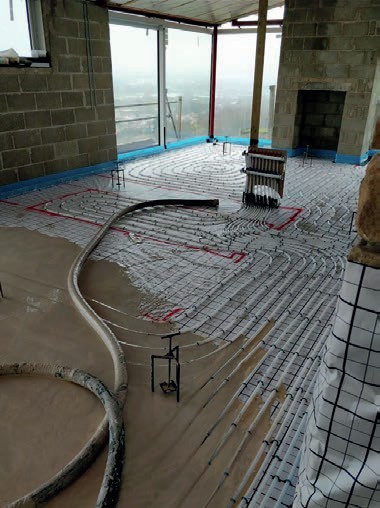BEGINNER’S GUIDE TO UNDERFLOOR HEATING
Find out how this energy-efficient form of central heating works and how to design the most effective setup for your home

The pipework in your UFH network feeds back to the manifold, as with this system from Underfloor Heating Trade Supplies

In this UFH install by WarmFloors, liquid screed is being pumped over the pipes. The tripods help to make sure that the pour is carried out to the correct depth
Underfloor heating (UFH) is a popular choice for space heating amongst self builders. There are two types of system to choose from: water-based, which consists of pipes, and electric, which instead uses cables. Depending on which you select, a network of either pipework or cables is laid out underneath the floor of a room, transforming the floor into a large-format heat emitter that works to warm up the whole room.
Many prize this type of heat emitter for its gentle, energy-efficient warmth and the touch of luxury it adds underfoot – not to mention the fact it won’t take up any extra space in your floorplan. It helps that installing UFH into a new home is simple and affordable, as it can be planned in from the start of the project. In this guide, we look at how underfloor heating works and the key considerations when installing the system to help you decide if it’s the right choice for your home.
How UFH works
Conventional water-based underfloor heating consists of a network of pipes filled with warm water and laid in a thick screed (typically around 70mm-75mm deep), which holds the system in place and ensures that the floor is level. Insulation is fitted beneath the UFH and your chosen floor finish goes on top.